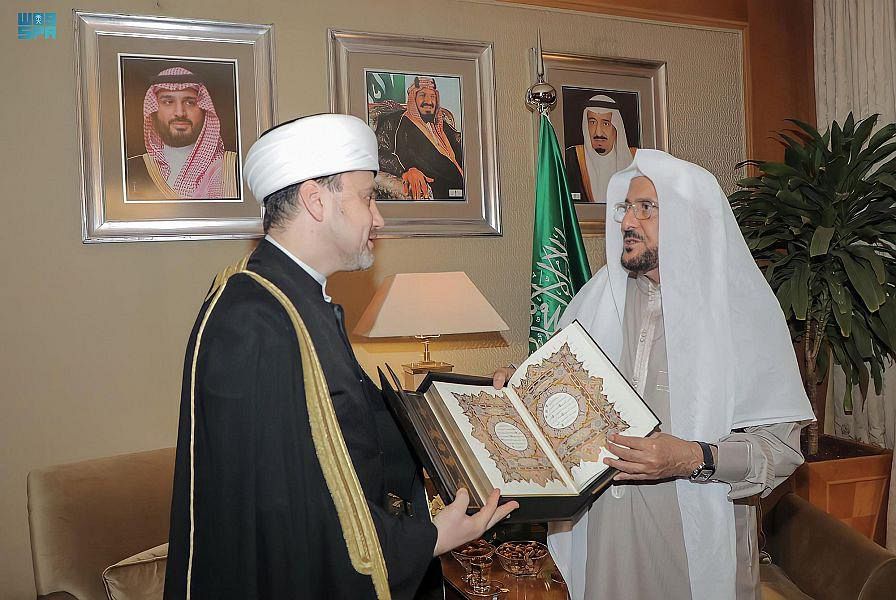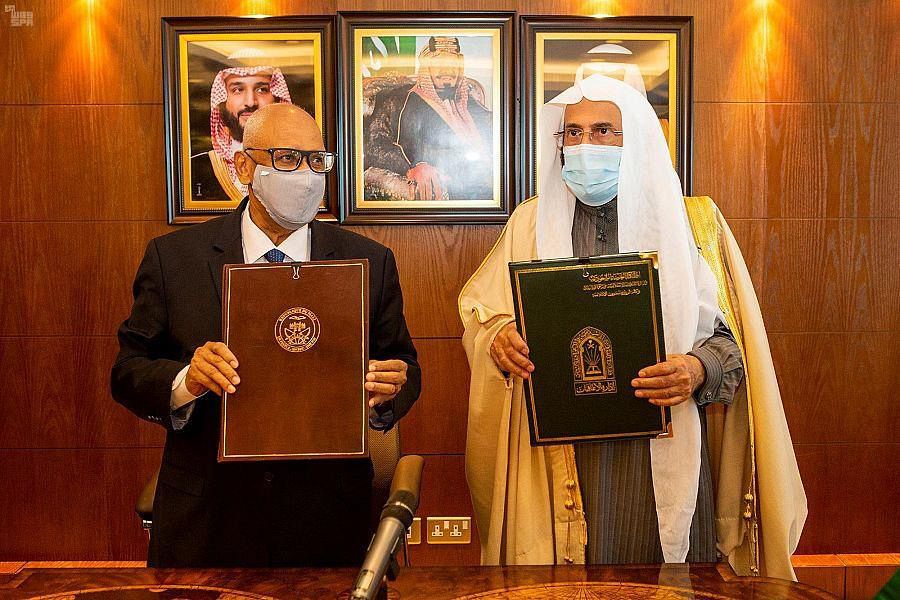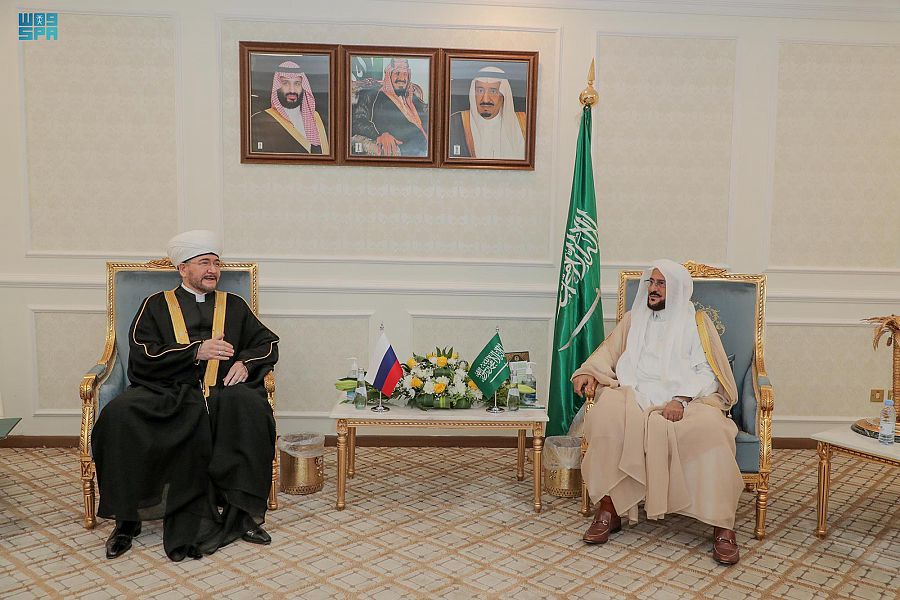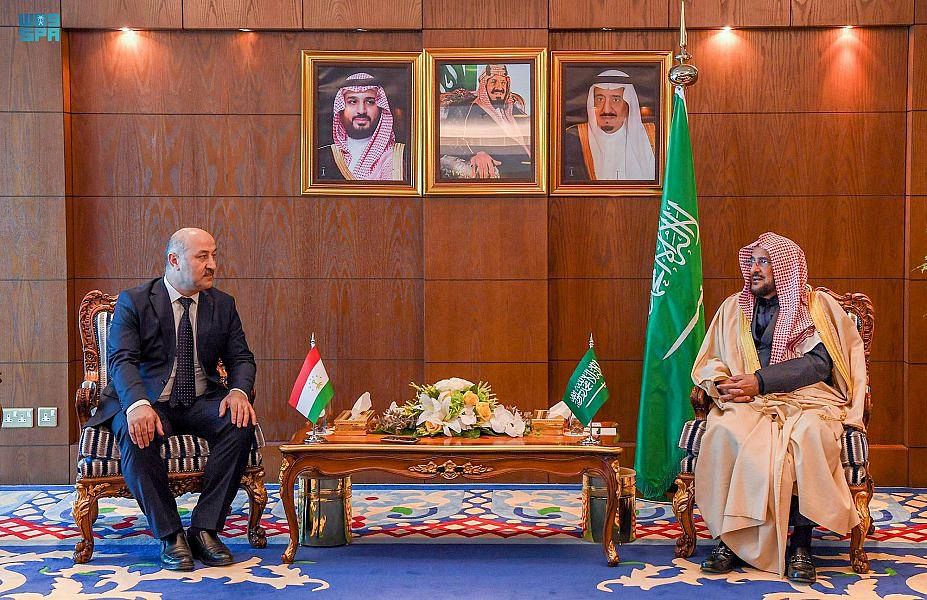
Renewed interest comes at a time of increasing questions of identity
Muslim academic created design for fabric traditionally associated with Scottish clans and institutions
LONDON: Sales of a specially designed Scottish Islamic tartan are soaring thanks to a surge of interest linked to timely questions of religious and national identity.
The tartan was introduced seven years ago to stand alongside the traditional woolen fabrics that proudly represent Scottish clans and institutions. It was designed in 2012 by Scottish Muslim academic, and Arab News columnist, Dr. Azeem Ibrahim to celebrate the histories of Scotland and Islam, and highlight and promote the dual heritage of the two communities in an attempt “to overcome religious intolerance and cultural discrimination.”
The mill that weaves the Islamic tartan fabric said that sales have been steady since it was launched but suddenly increased in the past week after an image and details of the tartan went viral on social media.
The sale of most tartans is a steady trickle, generally, and we normally expect a few orders a week,” said Nick Fiddes, managing director of DC Dalgliesh, which describes itself as the world’s only hand-crafted tartan mill. “The volume went up by four to six times, perhaps. It was very noticeable and we had no idea why at first. It was quite mysterious.”
The sudden interest came after Canadian academic Laura Morlock, who specializes in religious attire, posted a tweet on Sept. 5 about the tartan.
“Scotland has officially created a tartan to honor its Muslim citizens,” she wrote. Despite coming 12 years after the launch of the fabric, the post was retweeted 13,000 times and liked by more than 50,000 people.
Morlock said the response to her post suggested that drawing attention to the tartan must have resonated at a time when Muslim communities in the West, and particularly the US, are feeling more isolated.
“I think people responded differently to learning about this because it hits a nerve at a time when hate crimes (particularly those against religious communities) are on the rise, and the news is full of federally mandated nationalistic cruelty around the globe,” she wrote in her blog.
Fiddes said the tartan is part of a Scottish-Islamic venture that aims to bring the two communities closer together.
“This is one thing I love about tartans,” he said. “It is saying that Muslims are a part of Scotland too, due to cultural significance.”
Tartan is produced in a variety of colors and patterns of criss-crossed horizontal and vertical lines and stripes, and forms part of Scotland’s national dress, most notably in the kilt.
“The Islamic tartan was essentially the Scottish-Muslim identity being weaved together in the same way that the tartan is weaved together through its strands,” said Ibrahim, who is director at the Center for Global Policy in Washington.
Muslims have been coming to Scotland since the late 18th century, when sailors from India, Pakistan, Yemen and Malaysia began to arrive in Glasgow on merchant ships. The Muslim population grew substantially after World War II, and a 2001 census indicated that 42,550 Muslims lived in Scotland at that time. Today the figure is estimated to be about 75,000.
In designing a tartan for this community, Ibrahim consulted some of the top tartan designers in the country. The theological explanation behind the final design is that it incorporates several Islamic and Scottish elements. The blue in the pattern represents the Saltire, Scotland’s national flag and green represents the color of Islam. There are five white lines to represent the five pillars of Islam, and six gold lines representing the six articles of faith. A black square represents the Kaaba in the Great Mosque of Makkah.
At the time the tartan was launched there was a debate about independence for Scotland, and a national referendum on the question of splitting from the rest of the UK was held two years later.
The Islamic tartan brought “a new focus to what it means to be a Scot,” Ibrahim wrote in 2012. “Muslim communities in Scotland are particularly sensitive to the complexities of culture, race and religion that are perceived as an integral part of Scottishness,” he added.
“Therefore the idea of a Scottish Islamic Tartan seemed to me to be the perfect symbol of the future generation in particular, for the younger, educated Muslims caught between two cultures: East and West, traditional and modern. Instead of conflict, the tartan represents a tightly woven blend of tradition and heritage.”
Ibrahim was initially puzzled as to why interest in the tartan is on the rise now.
“I think it is something that nobody ever understands, when things will go viral,” he said. “A couple of people tweeted it and then it became absolutely nuts and it has gone all over the world.”
The boost in the profile of the tartan comes at a time when the United Kingdom is preparing for its departure from the European Union. Many believe this increases the likelihood of a renewed push for Scottish independence, given that Scotland voted overwhelmingly in the 2016 UK referendum on Brexit to remain in the EU.
“There’s certainly much more interest in people’s identities and people’s affiliations and about how people feel about their personal (sense of) belonging: what exactly they belong to,” said Ibrahim.
The Islamic tartan was not introduced for commercial purposes, he added, but rather as a public-relations exercise “to celebrate Scottish-Islamic identity as these two civilizations have made an immense contribution to humanity.”
Ibrahim said he has presented a number of scarfs and ties from the Islamic tartan to world leaders and dignitaries, including Pakistani Prime Minister Imran Khan, Malaysian politician Anwar Ibrahim and former Nigerian President Olusegun Obasanjo.
One of the people who appeared in the original promotional images for the launch tartan was Scottish National Party politician Humza Yousaf, who is now Scotland’s justice minister.
“It was an importantly symbolic initiative that brought together the various strands of our multifaceted identities as Scots, Muslims, etc.,” he said.










